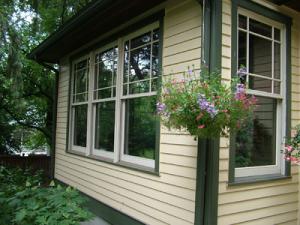- MENU
- HOME
- SEARCH
- WORLD
- MAIN
- AFRICA
- ASIA
- BALKANS
- EUROPE
- LATIN AMERICA
- MIDDLE EAST
- United Kingdom
- United States
- Argentina
- Australia
- Austria
- Benelux
- Brazil
- Canada
- China
- France
- Germany
- Greece
- Hungary
- India
- Indonesia
- Ireland
- Israel
- Italy
- Japan
- Korea
- Mexico
- New Zealand
- Pakistan
- Philippines
- Poland
- Russia
- South Africa
- Spain
- Taiwan
- Turkey
- USA
- BUSINESS
- WEALTH
- STOCKS
- TECH
- HEALTH
- LIFESTYLE
- ENTERTAINMENT
- SPORTS
- RSS
- iHaveNet.com

One thing's for sure. If you don't replace the old windows, you'll probably end up having to repair them from time to time.
If you do, be aware that any paint or even clear varnish on the windows probably contain lead. Be sure to read up on the many dangers of lead, and how even small amounts of lead dust can cause great harm to you, your husband or any children or pets you have.
Old windows are possibly the largest energy thieves in your home.
Single-pane glass has an R-value of only 1, and typically there is no insulation between the window jamb and the rough framing of the window. The concealed space where the cast-iron weights go up and down has no insulation. Poor or non-existent caulking around windows can allow massive amounts of air infiltration.
In other words, if you decide to keep your old double-hung windows, you need to understand you'll be wasting energy dollars whenever your furnace or air conditioner is operating.
You may not think these windows leak lots of air, but chances are they do.
There are all sorts of things you can do to minimize the air loss -- weather-stripping, caulking, shrink-wrapping, etc. -- but you'll never stop all of it.
To make an informed decision about investing in new windows, you need to put a pencil to paper.
Among the many things you need to consider are current heating and cooling costs, projected maintenance of the existing windows, and future increases in the cost of fuel.
It's not easy to do all the math, and that's why many people throw up their hands and rashly choose to replace their windows, hoping they save money. But in some instances they never save any money at all. Always remember that you never begin saving money until you have recaptured the money you spent on the improvement, plus interest you could have otherwise earned on that money.
Get copies of your home's utility bills for the past two years.
You can often separate the heating cost by looking at the bills for summer vs. those for winter. If the fuel source is natural gas or propane, you can see the dramatic rise between fall and spring. Do the math to calculate the approximate cost of heating the home. You may be surprised to discover that the cost is less than $1,500 per heating season if you have a smaller home.
Let's assume that with new windows installed you could save as much as 30 percent.
I'm not saying you will, but let's make that assumption. This means that you'll only reduce your heating cost per year by $450. For now, let's assume the cost of the fuel will rise 4 percent per year. This means that in 10 years, you would save approximately $5,397.
That's not bad, but imagine if you had spent $10,000 or more replacing the old windows with new ones! It would take another eight or nine years of energy savings just to break even, not counting the lost interest on the money. If you finance the new windows, the payback period is even longer because of the interest you pay on the loan.
Tax credits, rebates and incentives from utility companies and other programs can affect the payback period.
All of these need to be considered. But beware of fast-talking salespeople who promise you instant savings. That's simply not the case.
If you decide to try to save money and install the windows yourself, it can be a challenge.
There are replacement kits that allow you to install new windows that match the existing ones in the current openings. With practice, you could completely replace a window in about an hour, maybe 90 minutes. You'll need a few tools to do this and possibly a belt sander in case you need to scribe a window to a jamb that's not square.
It's very hard to make accurate cost-savings projections.
There are some highly scientific methods that take into account the higher R-value of the new windows and lower air-infiltration rates, but other factors come into play, such as thermostat settings, heating-degree days of the winter from year to year, interior thermostat settings and so forth.
Perhaps the best thing to do is to take a hard look at the efficiency of your existing furnace and air conditioner.
If you have an old furnace that eats too much fuel, you may get a faster payback by using your money on a high-efficiency furnace and air conditioner.
Once again, you must do the math and see when you actually recapture the money you spend. If you do this, then be sure to seal all air leaks around your old windows.
If you live in an area where heating with wood is allowed, you may look into this alternative. There are some very efficient wood stoves that produce vast amounts of heat. If you have access to wood at a low cost, perhaps your best bet is to invest in a decorative, yet functional, wood stove. As you can see, there are many things to consider.